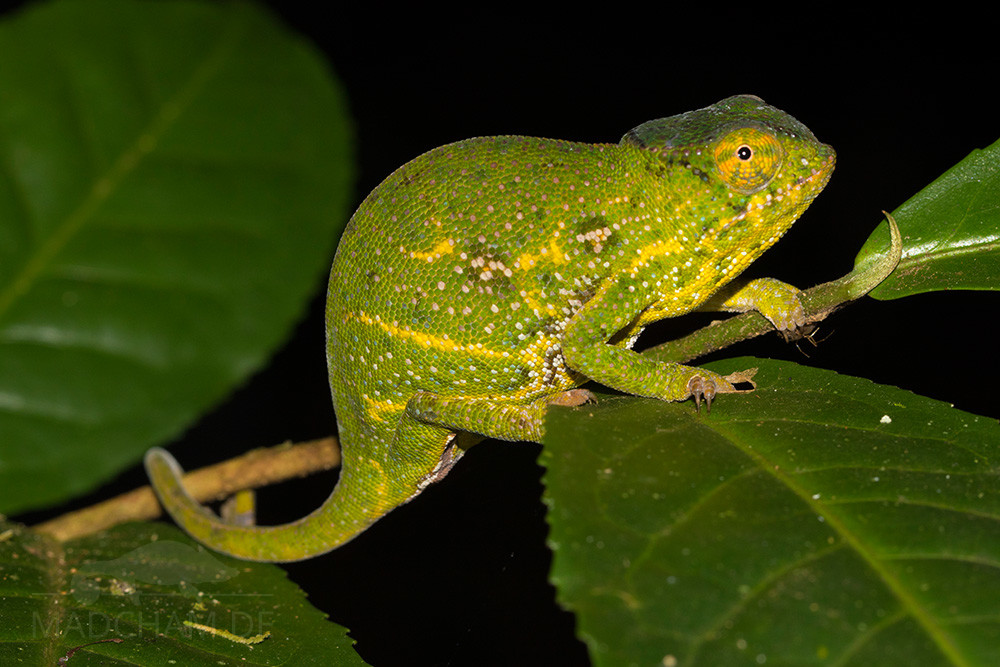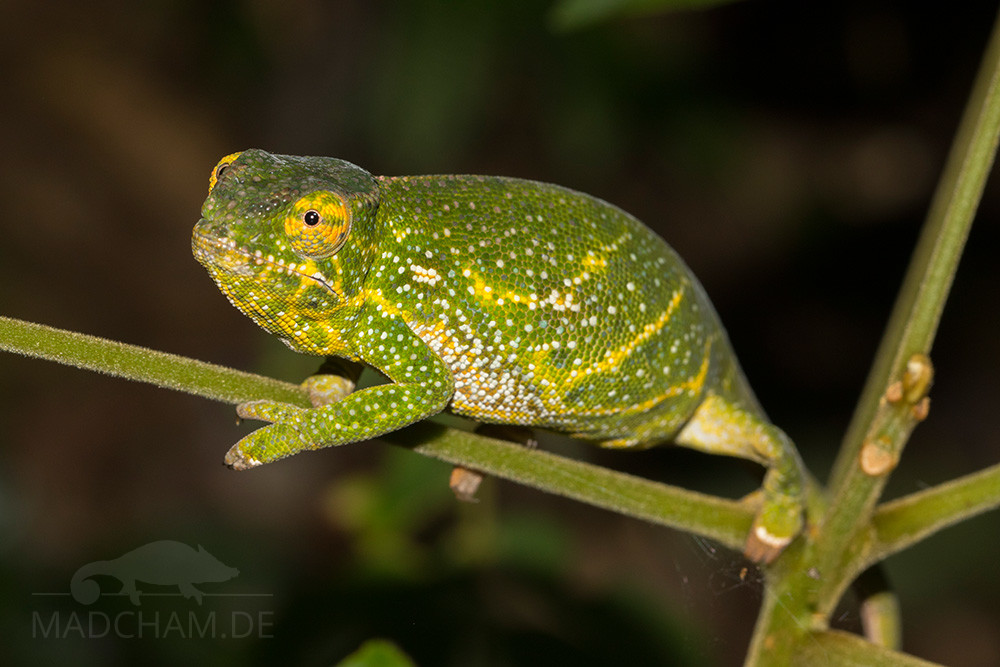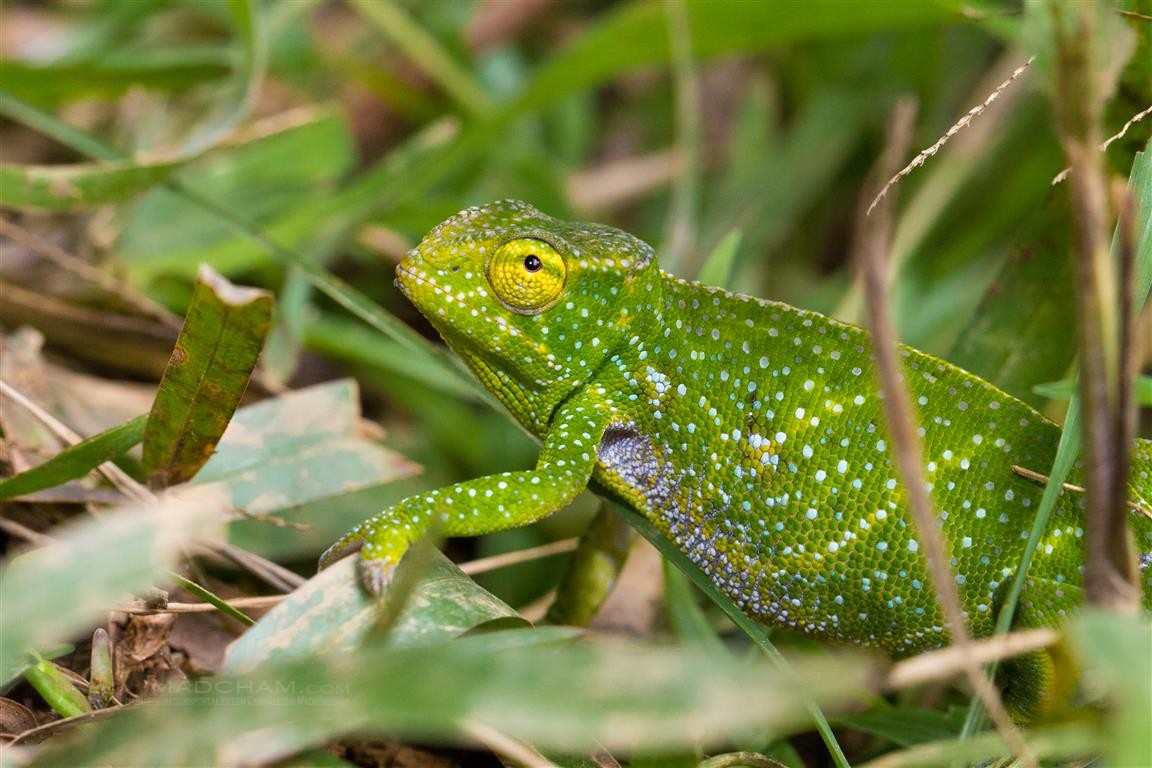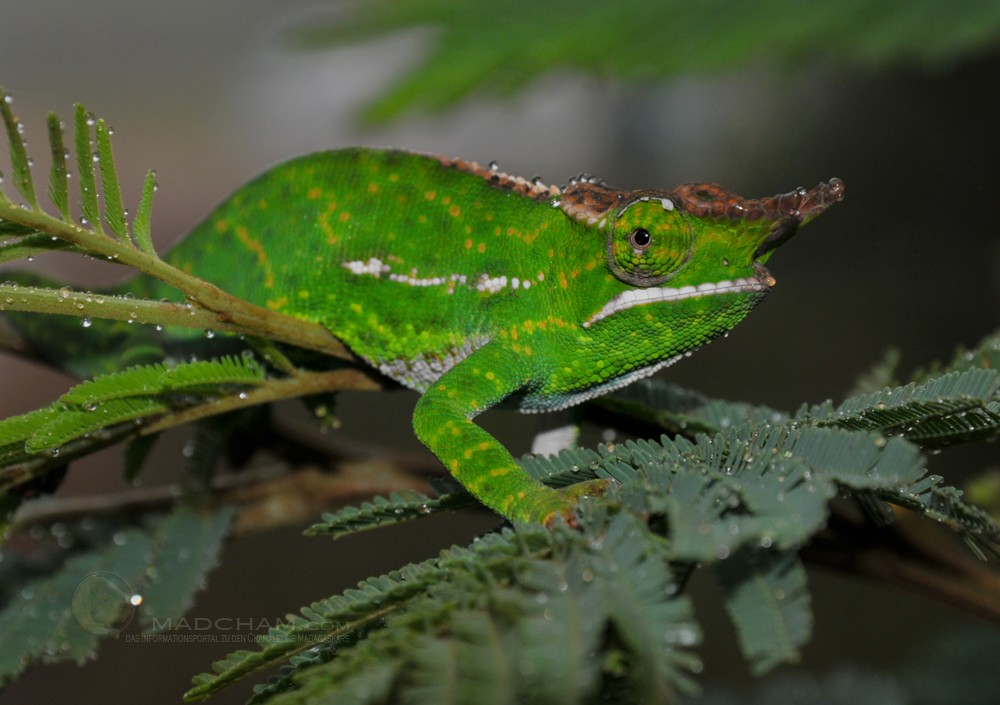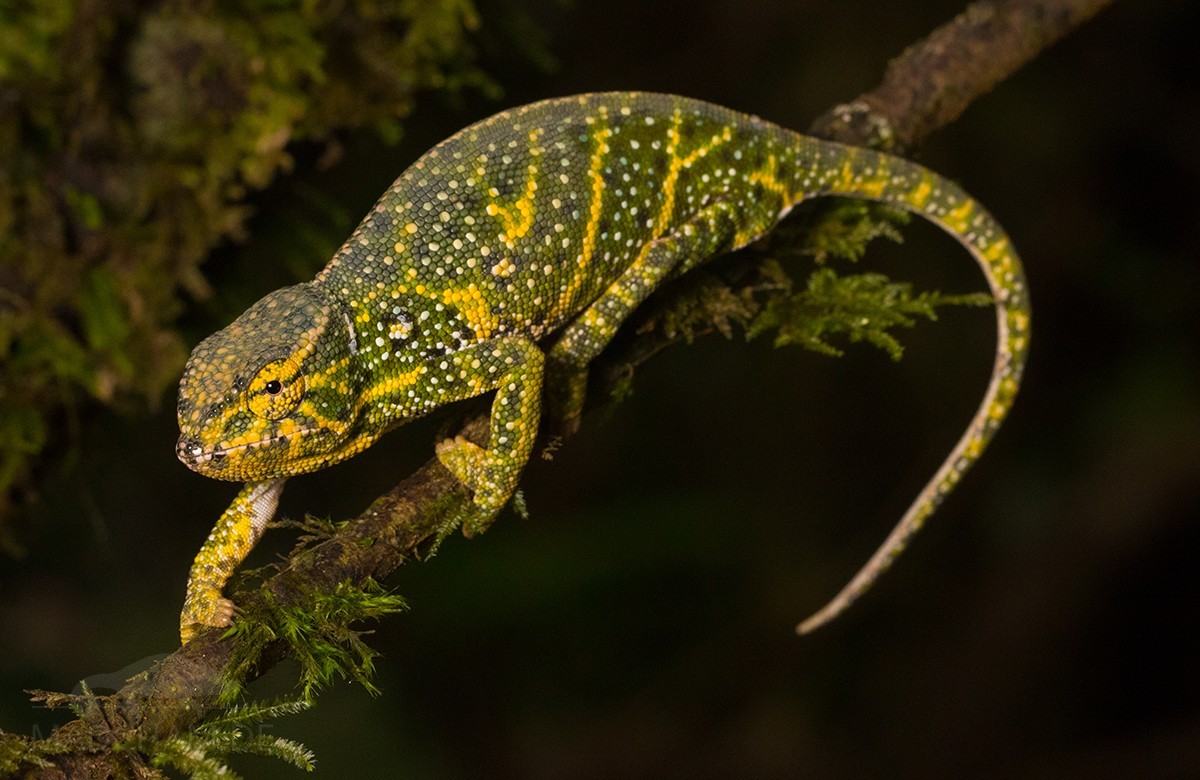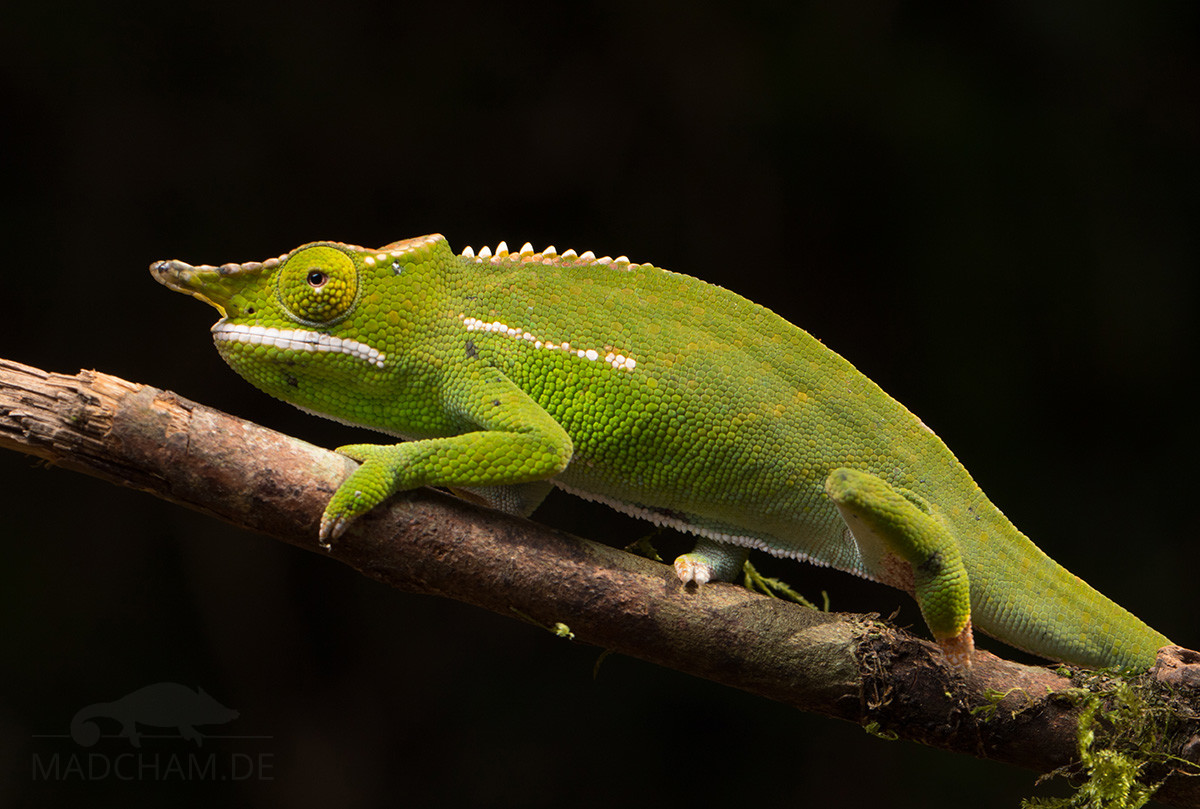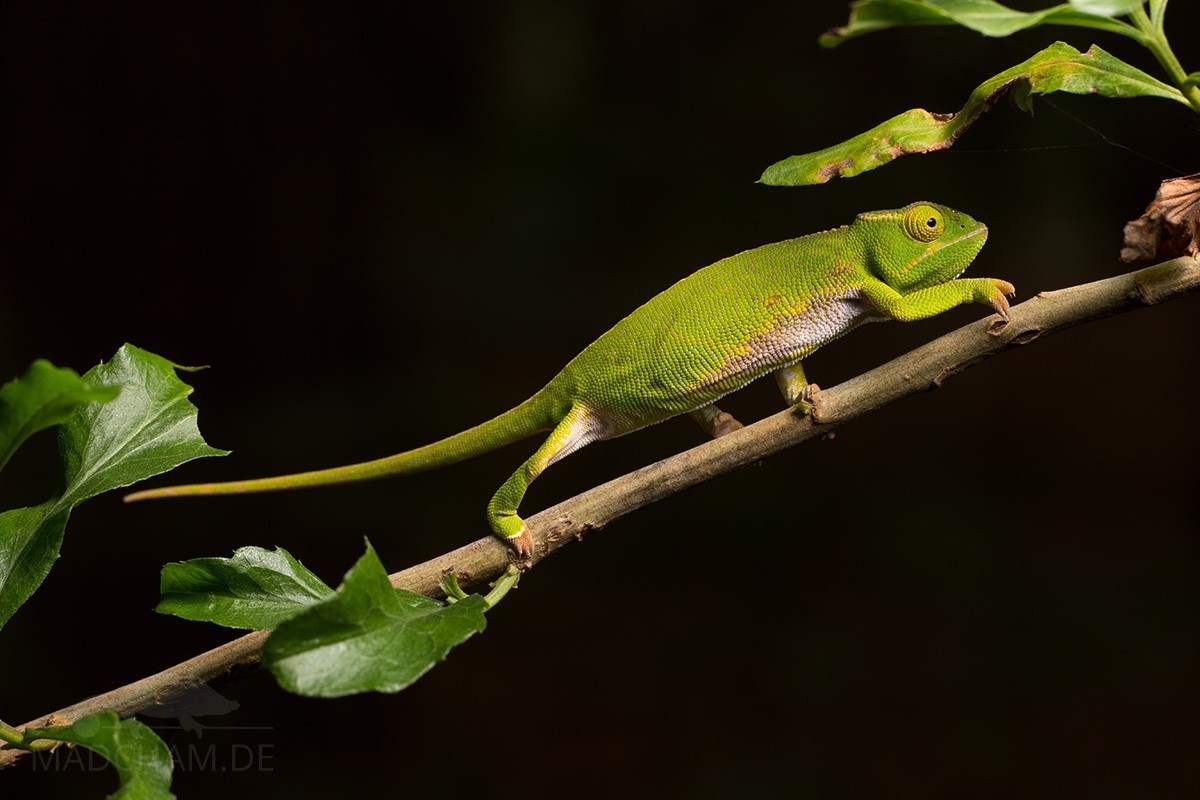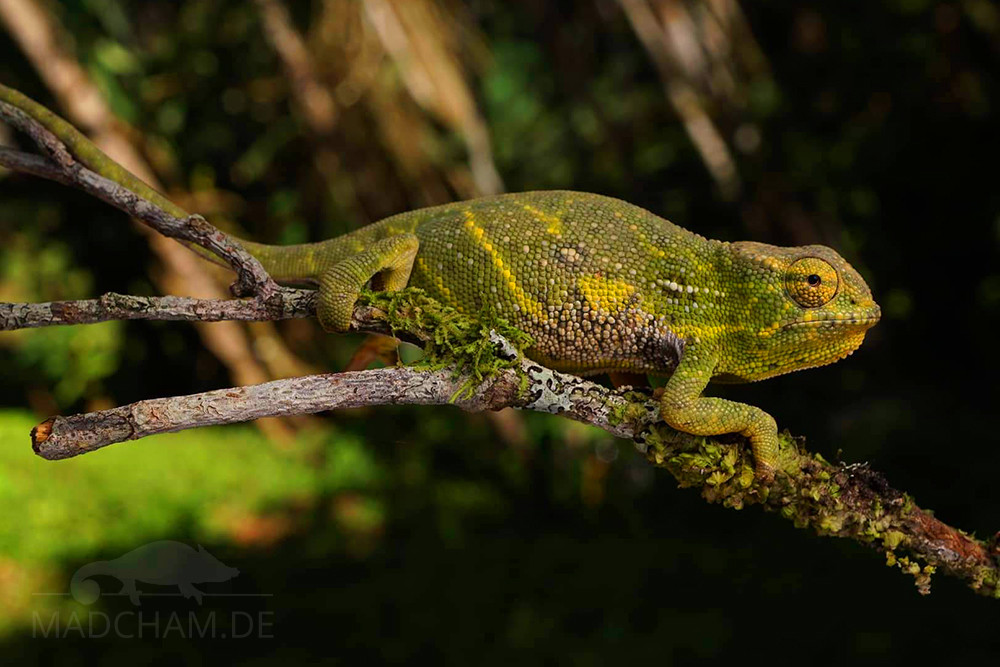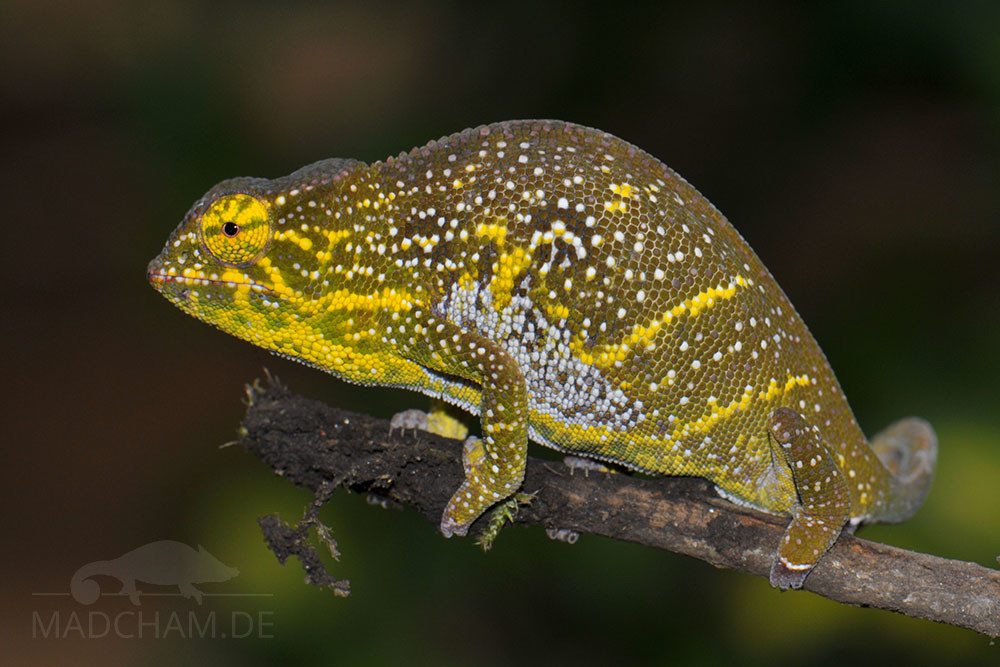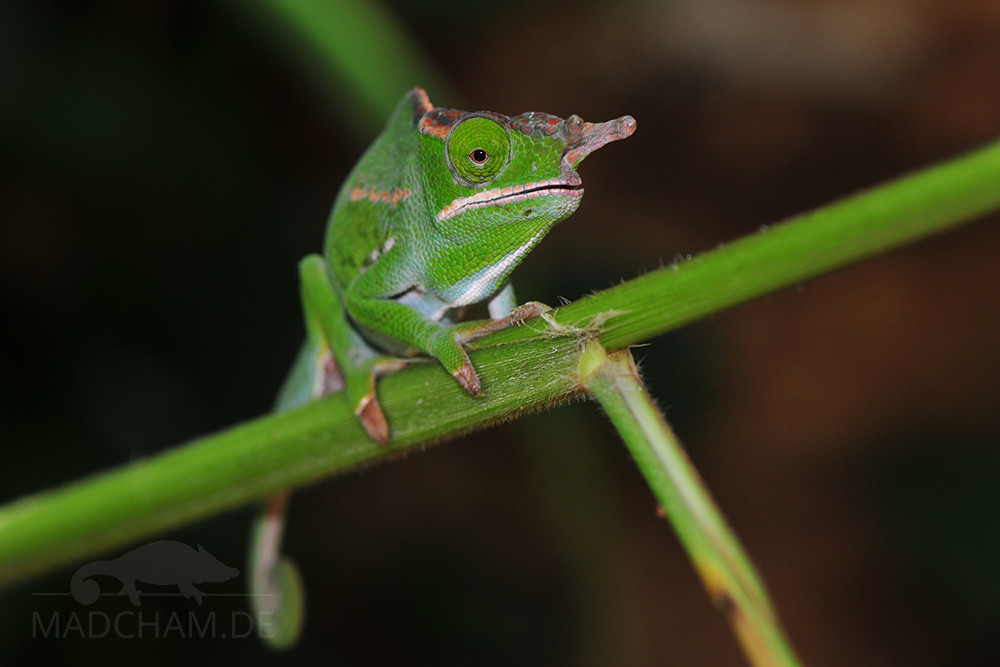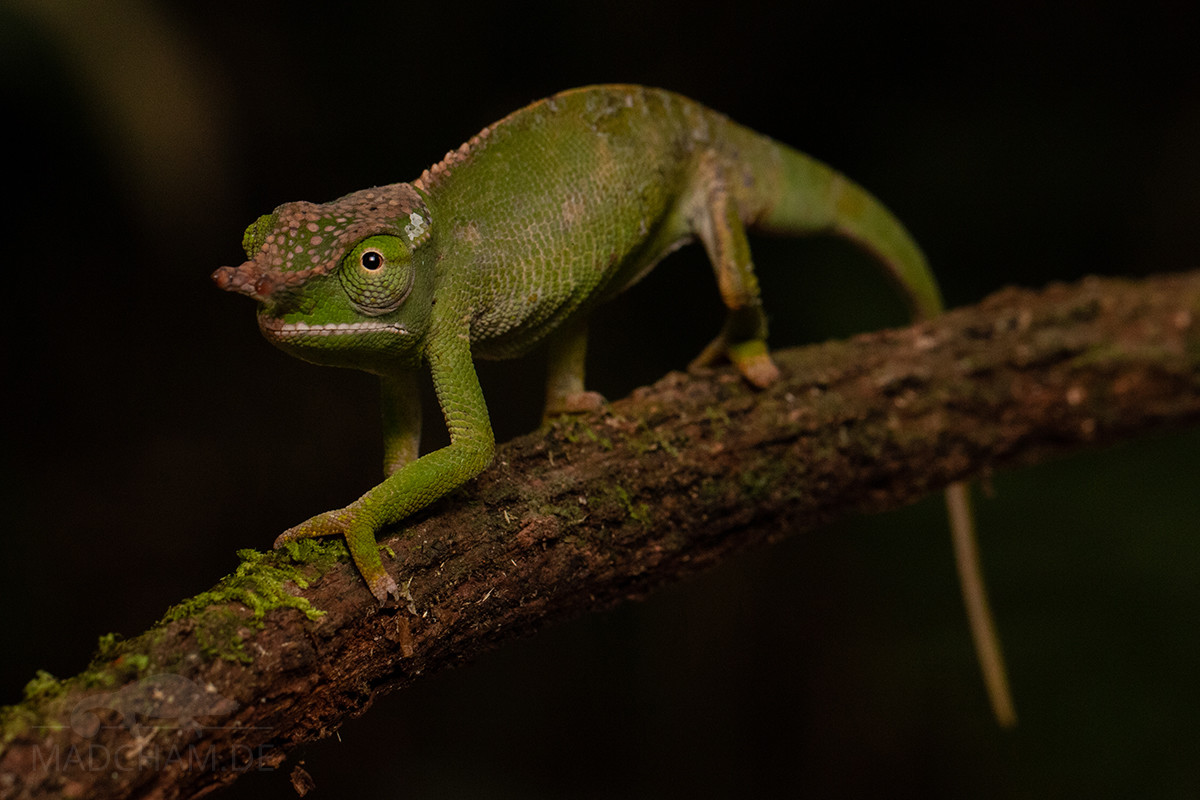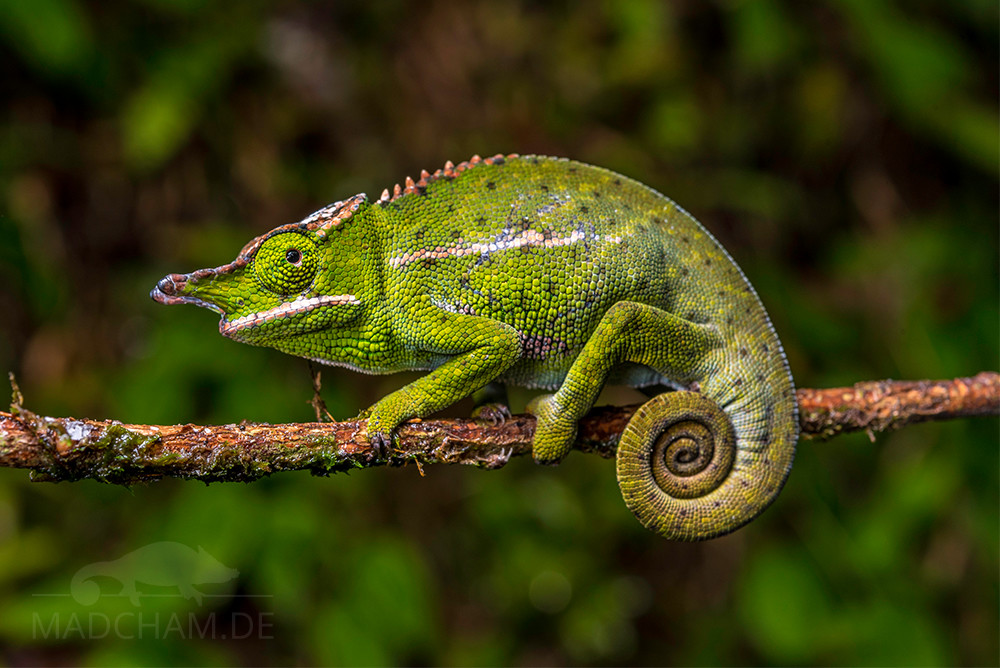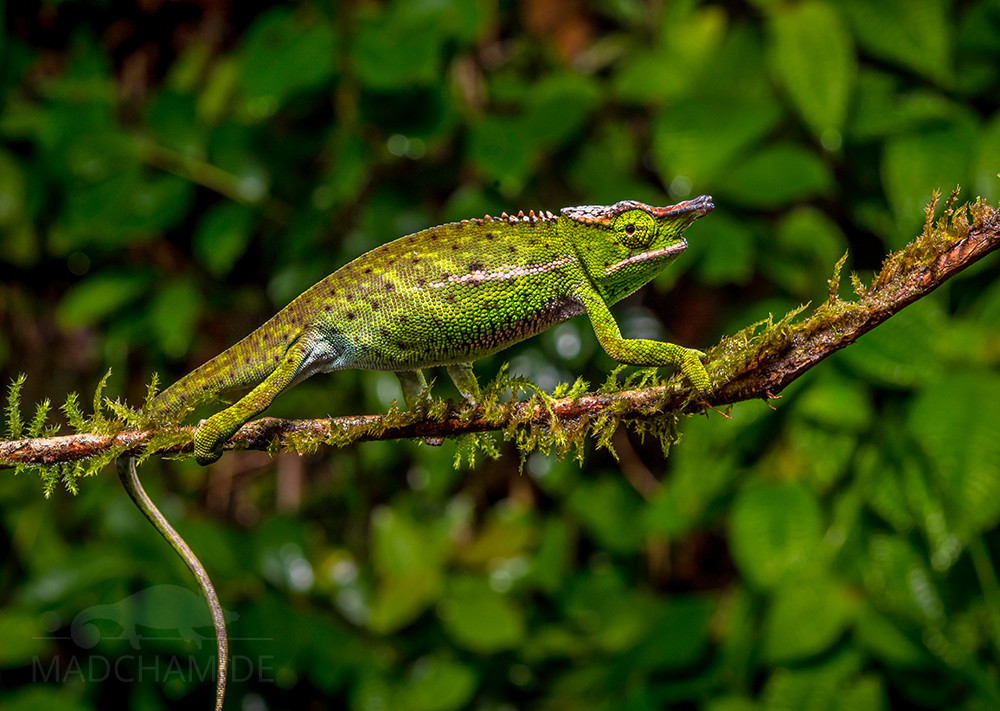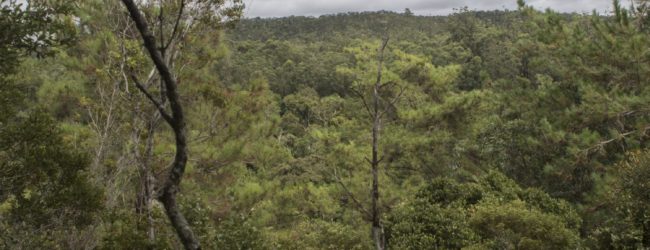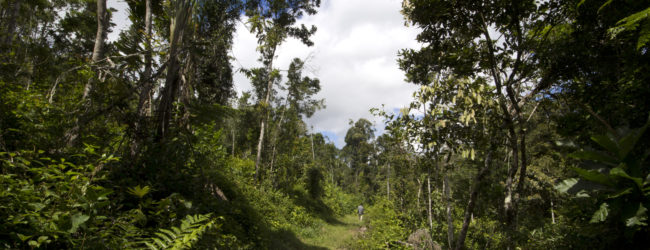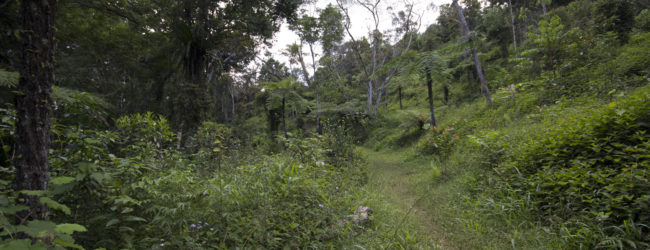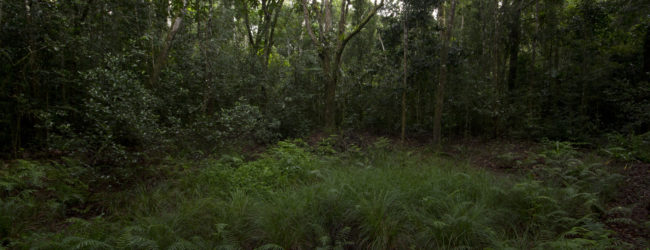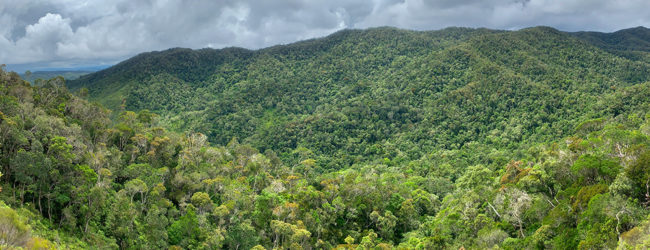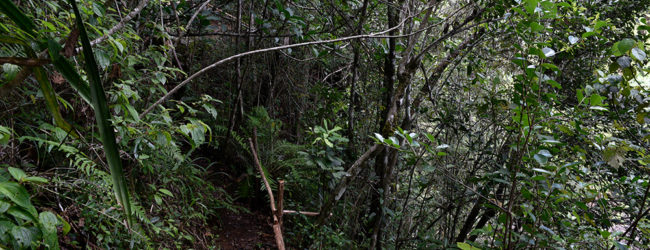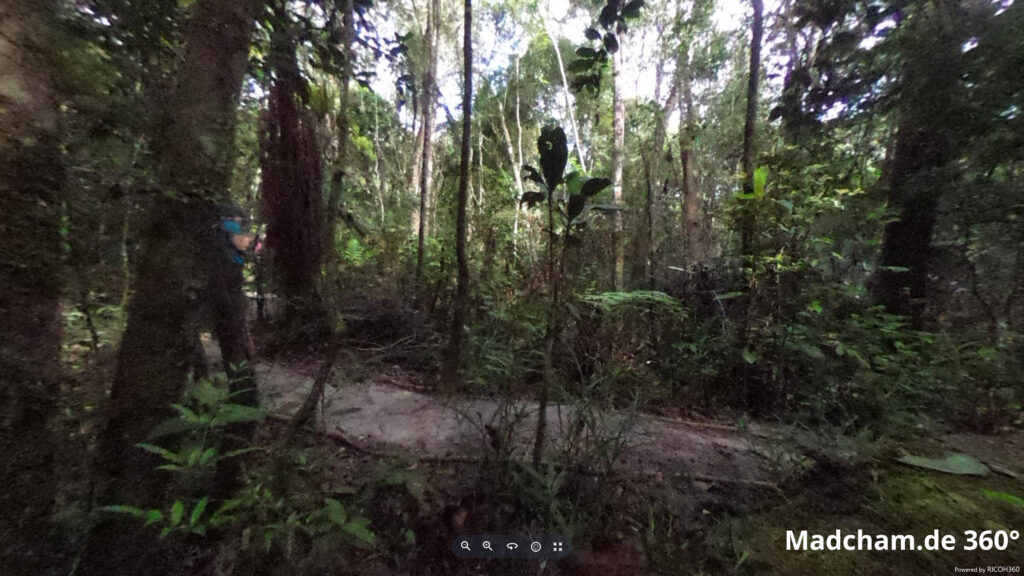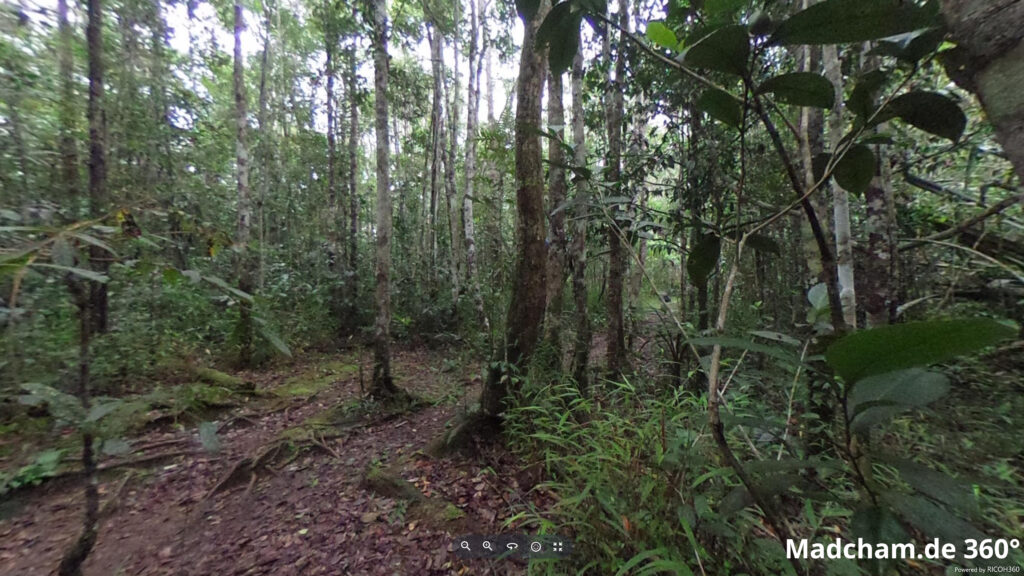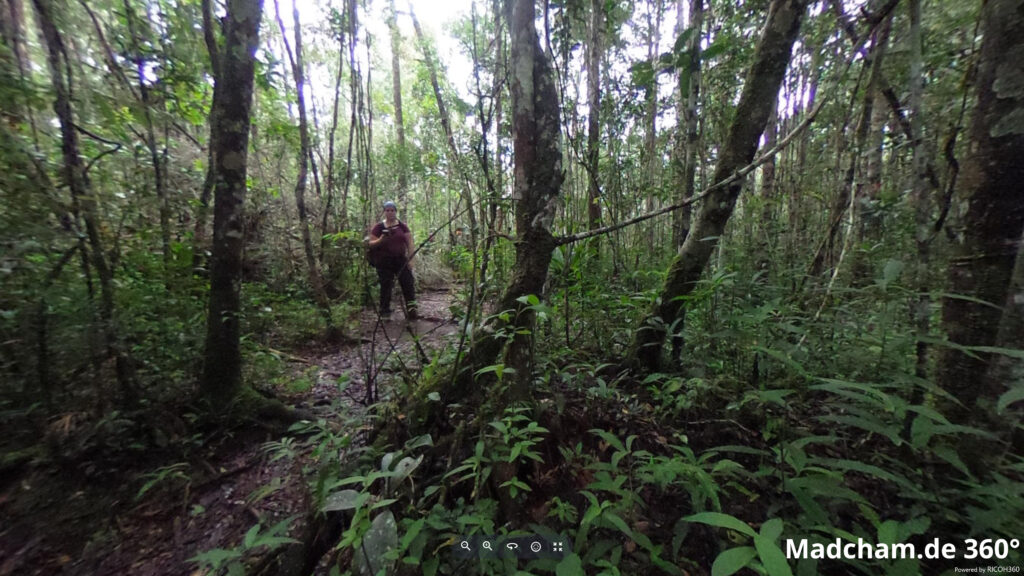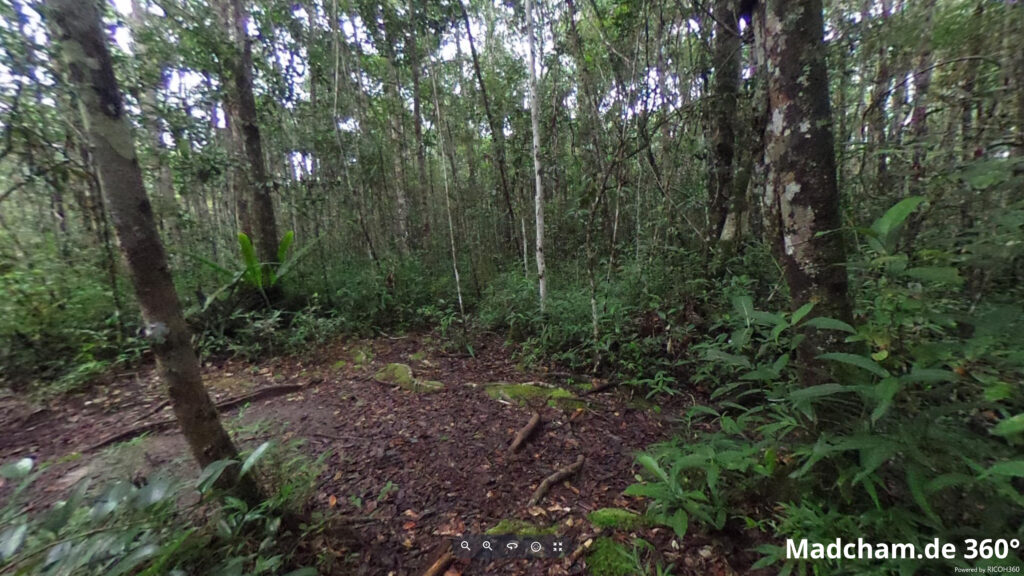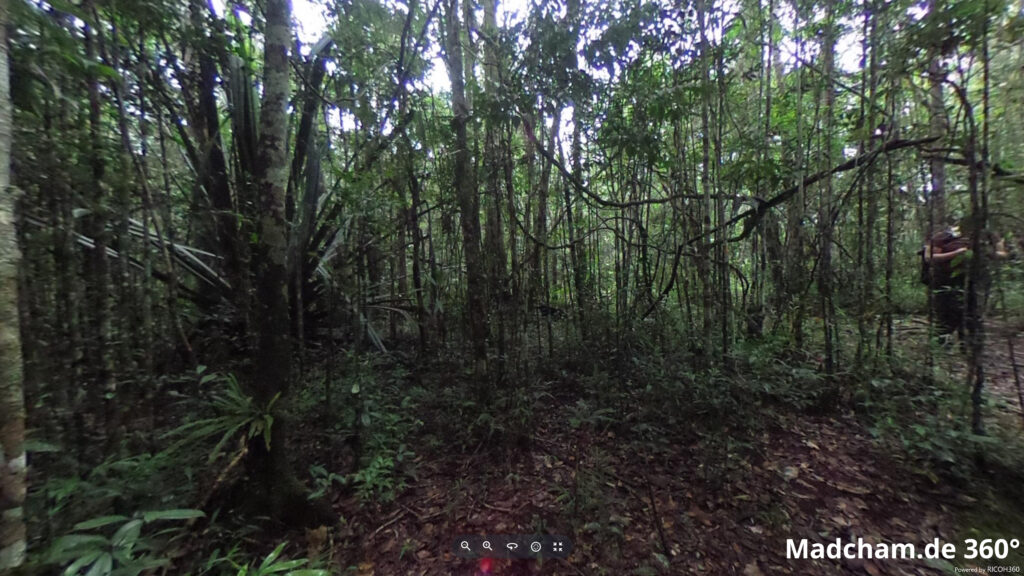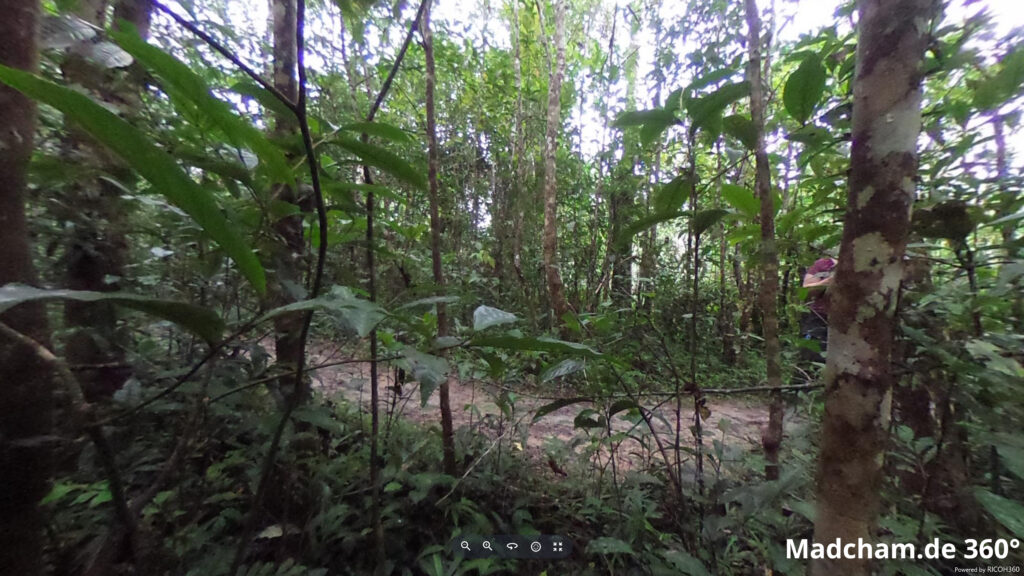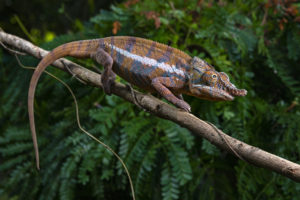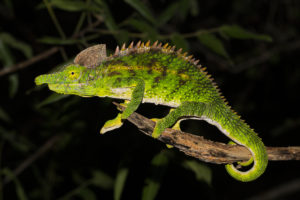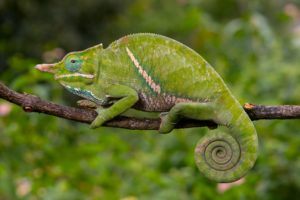2011-12 no specimens, 2013 50 specimens, 2014-24 each 500 specimens for legal export
First description:
Origin of the species name:
The German zoologist Albert Carl Ludwig Gotthilf Günther, then Director of the Zoological Department of the Natural History Museum of London (Great Britain), named this chameleon species after the missionary James A. Wills. The specimens described by Günther came from the collection of the Englishman who lived in the highlands of Madagascar. Wills was also engaged in ornithology.
Distribution:
Furcifer willsii inhabits the mountain forests of mainly Madagascar’s central east. The most popular distribution area is probably Analamazaotra, which is part of the Andasibe-Mantadia national park. They live at elevations up to 1200 meters. You will hardly find them in secondary vegetation, they prefer living in the humid, dense primary forests. Relatively far south for the species, a Furcifer willsii was found in 2018 in the stomach of a Mahafaly snake in the Andringitra Mountains.
Appearance and size:
Furcifer willsii belongs with 15 to 17 cm total length to the smaller chameleon species. The males have two conspicuous, parallel, upward curved nose extensions, which are completely missing in the females. They are colored green with a thin white lateral stripe and white lips. The colors of the females are more variable, from yellow-green to a dark brown with bright yellow or white dots as pregnancy coloring. Both sexes carry a white line along the abdominal crest.
Good to know:
Despite their size, these chameleons are rather sensitive and are not afraid to attack a photographer’s finger. Less aggressive individuals are often frantic and run quickly up and down an offered branch, so photographing can become quite a challenge and should be done quickly.
| Jan | Feb | Mar | Apr | May | Jun | Jul | Aug | Sep | Oct | Nov | Dec | |
| Average temperature | 23 | 24 | 23 | 23 | 22 | 19 | 19 | 19 | 20 | 21 | 22 | 23 |
| Minimum temperature | 20 | 20 | 20 | 19 | 18 | 15 | 15 | 15 | 15 | 16 | 18 | 19 |
| Maximum temperature | 27 | 27 | 27 | 27 | 25 | 23 | 23 | 23 | 24 | 25 | 26 | 27 |
| Rain days | 27 | 24 | 26 | 19 | 17 | 18 | 21 | 20 | 15 | 16 | 20 | 25 |
We have collected the data given above over several years with thermometers and hygrometers at the finding places of the chameleons. "Average temperature" means that values of a whole month have been calculated to one average value per month. For example all measured minimum temperature values of February have been calculated to one average minimum temperature for February. In plain language, this means single peak values of a day may be a little higher or lower than the average minimum and maximum temperatures. It is possible that a location has an average maximum temperature of 29°C, but one day during that month it had 33°C or even 35°C there.
Three examples of a daily course of temperatures in Andasibe in the rainy season can be found below. Both were recorded with data loggers in 2023.
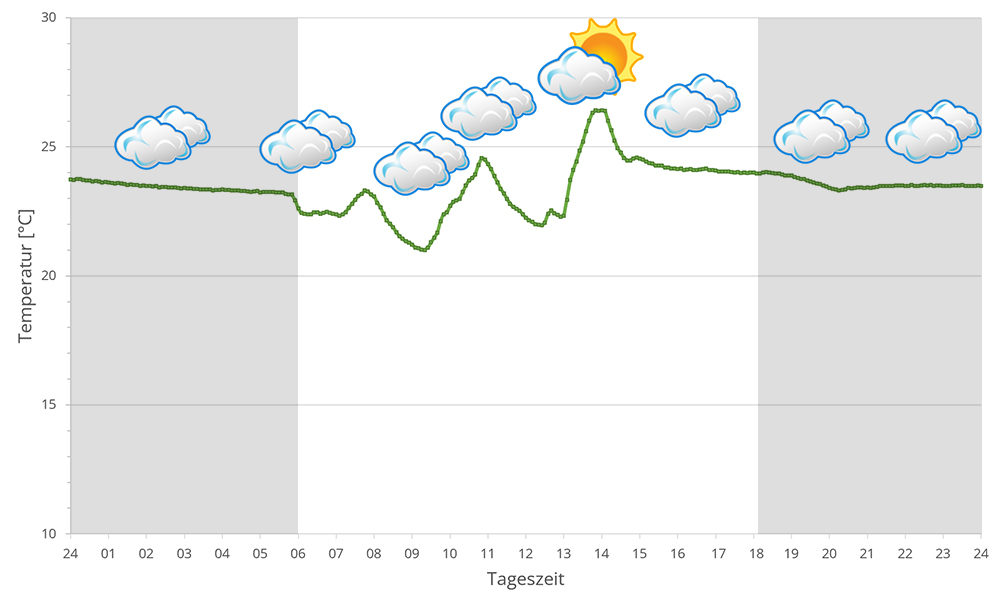
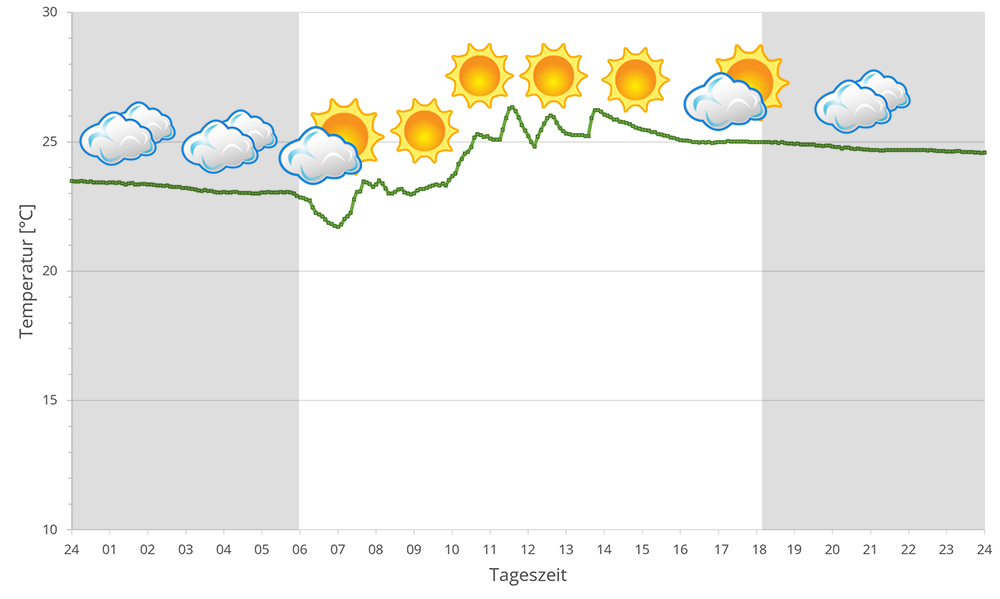
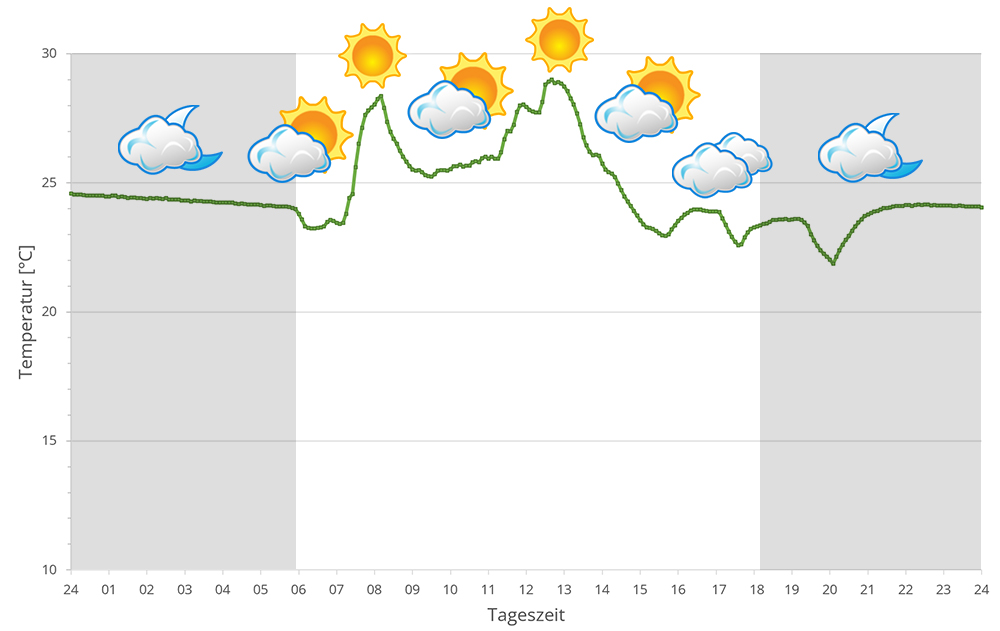
The region around Andasibe with the associated forests of Mantadia, Mitsinjo and Analamazaotra lie in the eastern highlands of Madagascar at altitudes between 900 and 1250 m above sea level. During the day, the temperature may sometimes exceed 25°C, but the thermometer rarely climbs above 30°C, or only in sunspots. At night, temperatures plummet, especially during the dry season. 10° to 15° degrees are the rule.
Humidity in the rainforests around Andasibe is high all year round. During the rainy season it rains extensively every day, sometimes the rain lasts for days. But the dry season is not massively different either, except that it has slightly cooler temperatures overall and reaches lower temperatures at night. It still rains at least every other day. Rain, high humidity and a drop in temperature at night are therefore the central points of Andasibe's climate. In 2023, we measured relative humidity with data loggers on different days in Andasibe in the rainy season, the data can be found below.
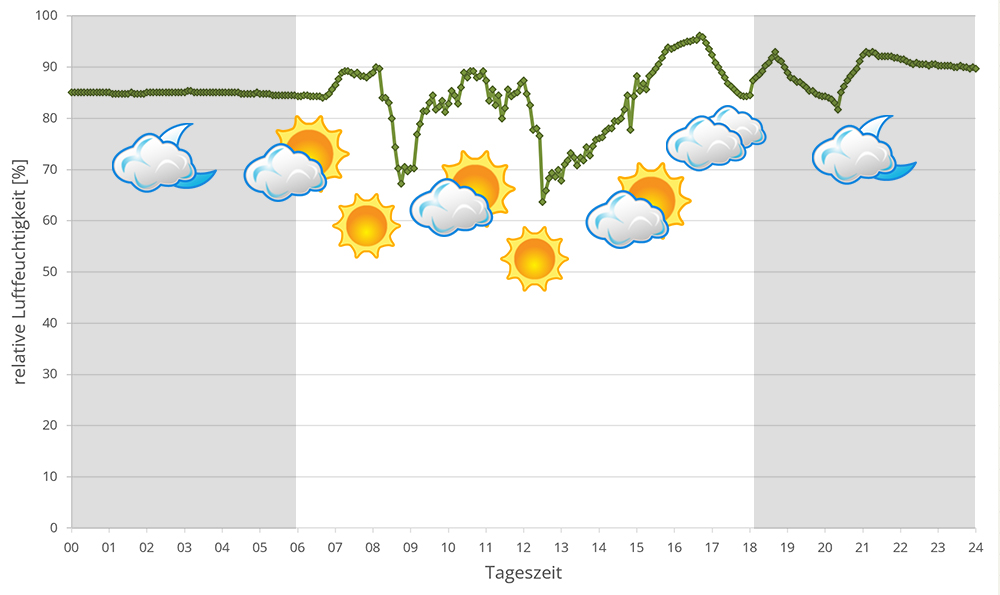
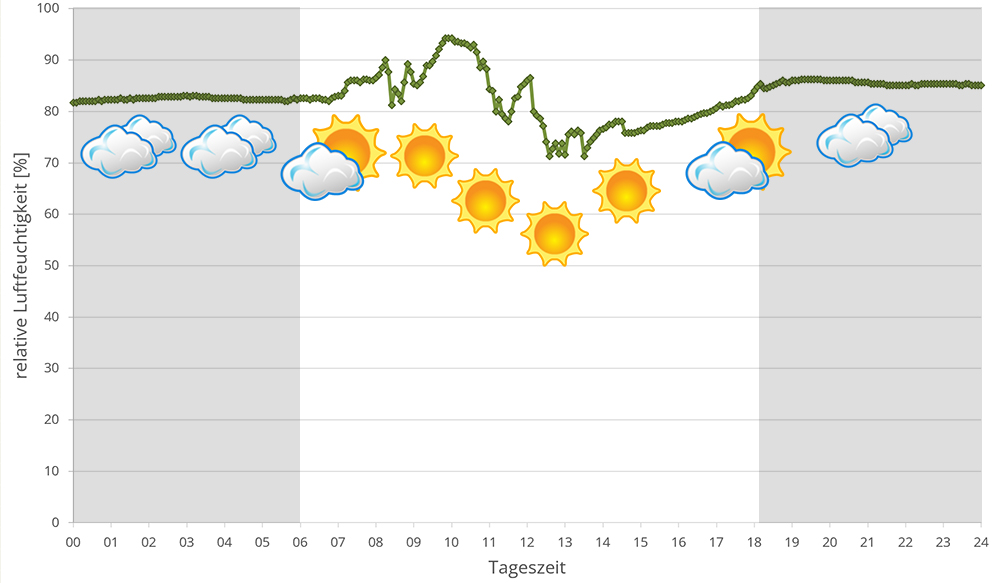
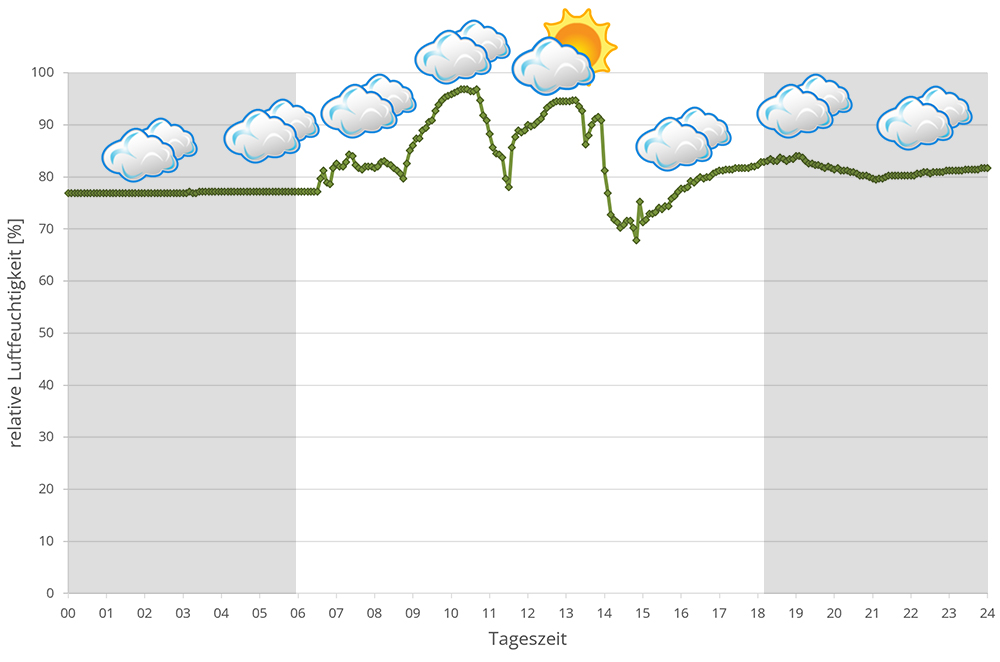
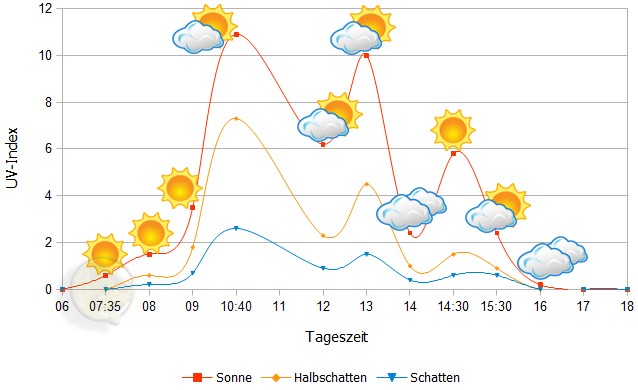
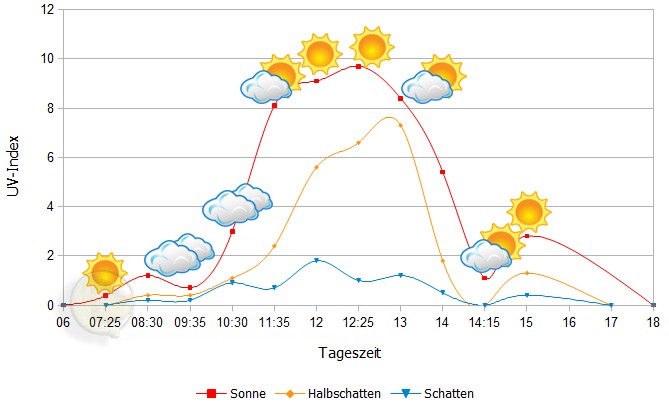 Tageszeit = day time, Sonne = sun, Halbschatten = half shade, Schatten = shade
Tageszeit = day time, Sonne = sun, Halbschatten = half shade, Schatten = shade
We have measured UVB data with a Solarmeter 6.5 in spring (March, April) at the peak of activity of chameleons in Madagascar. We always measured the values that a chameleon could maximally reach in its habitat.
| Jan | Feb | Mar | Apr | May | Jun | Jul | Aug | Sep | Oct | Nov | Dec | |
| Morning | 23,2 | 23,4 | 22,0 | 22,1 | 20,5 | 16,0 | 16,3 | 16,5 | 17,4 | 16,7 | 21,2 | - |
| Midday | 25,4 | 25,3 | 24,5 | 22,5 | 20,2 | 16,5 | 16,3 | 17,7 | 18,3 | 18,0 | 21,4 | - |
| Evening | 25,5 | 25,1 | 25,0 | 25,3 | 20,8 | 17,2 | 16,1 | 17,0 | 19,6 | 23,0 | 22,0 | - |
Between 21 March 2018 and 05 February 2019, we measured ground temperatures in the rainforest of Andasibe and surrounding areas (Analamazaotra, Andasibe, V.O.I.M.M.A. and Mitsinjo) about every other day - the table is the result of these measurements. Only in December no measurements were taken. detailed review can be found here. In total, we took 418 soil temperature measurements and measured an estimated 70 different locations in Andasibe and the surrounding area at a depth of 20 cm.
In 2023, in addition to other climate data, we also measured the air pressure at the locations we visited in Madagascar. The following data is from different days during the rainy season in Andasibe. On the X-axis is the time of day or night. In Madagascar, the day begins around 6 am, and night falls at 6 pm. The Y-axis shows the atmospheric pressure in hPa.
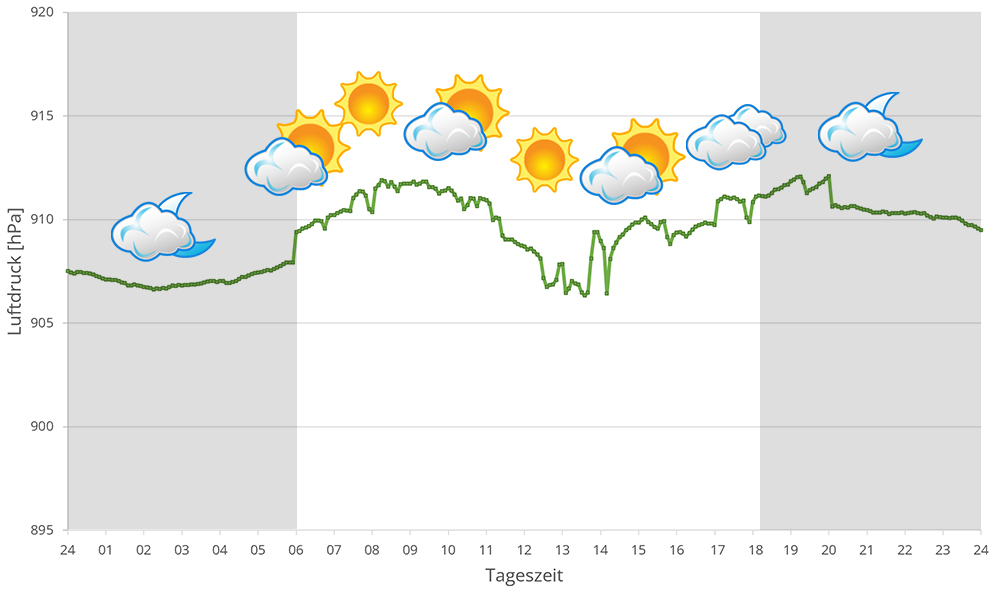
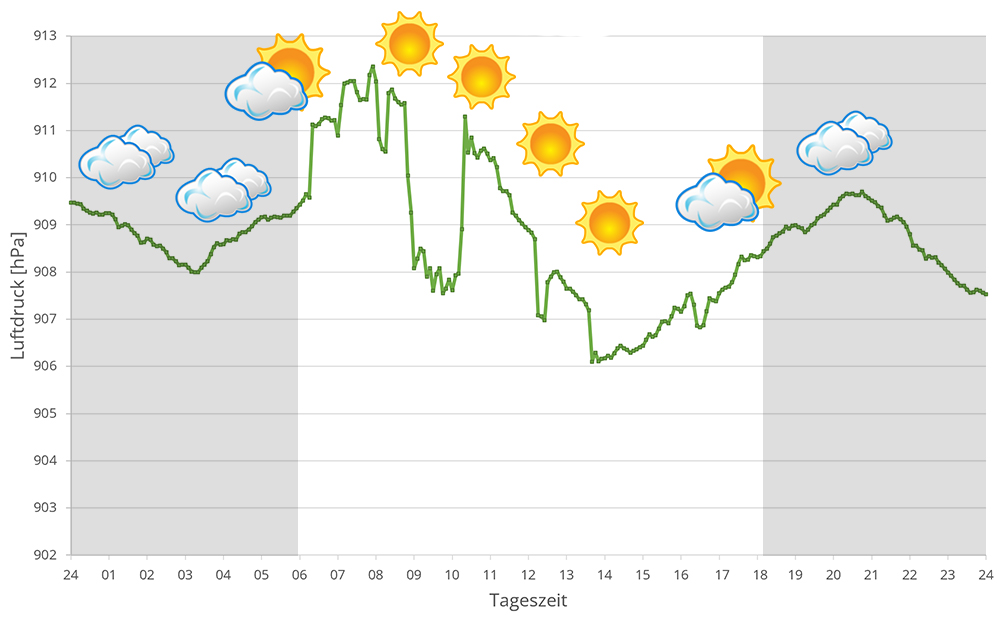
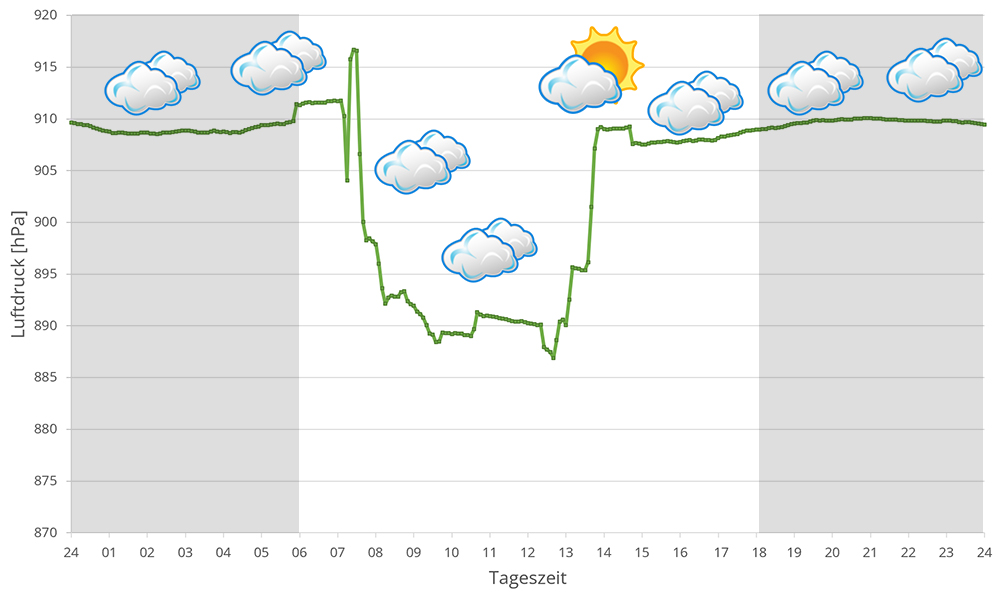
Habitat:
The following pictures show the habitat of Furcifer willsii in the region around Andasibe. Some are from finding places of the species. The rainforests of this area mainly consist of slender trees. This species can be found in denser forest parts, where the undergrowth is overgrown by ferns and moss.
Below you will find some 360° images of rainforests in Andasibe and Analamazaotra that we took during the rainy season. If you click on the respective image, the pictures will open in an enlarged view in a separate window. You can use the mouse to rotate in all directions. You also have the option of running the images in full-screen mode. Have fun looking at them!

